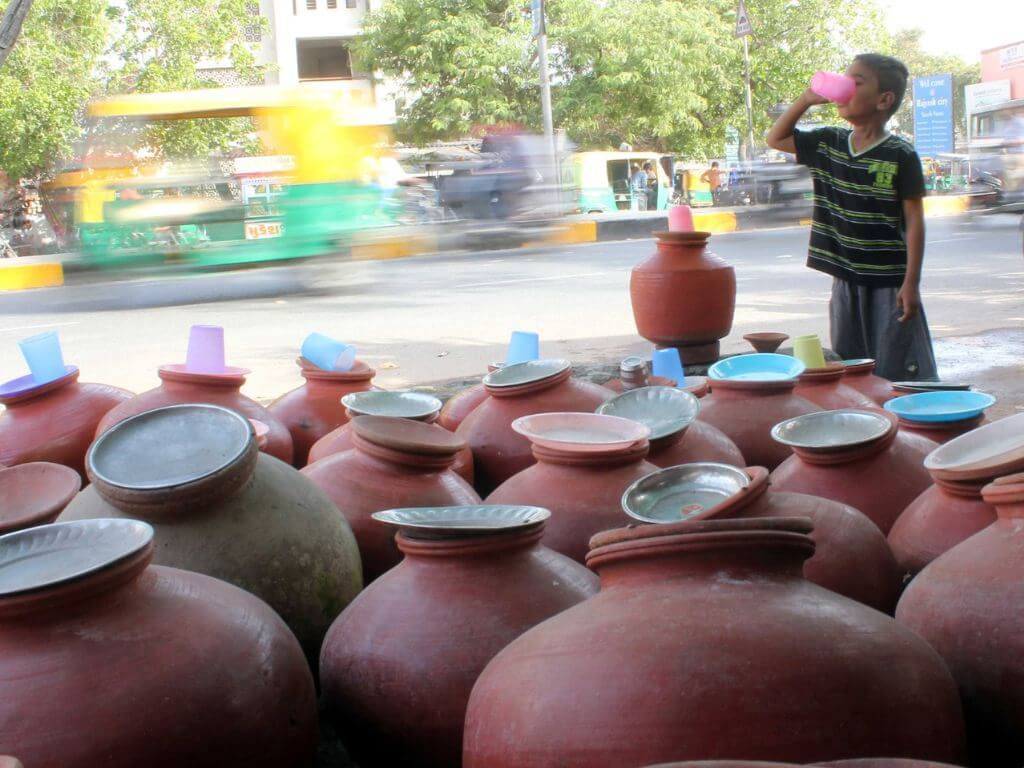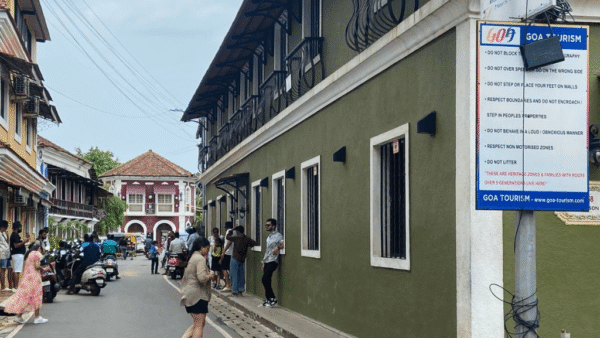This year marks the tenth anniversary of Ahmedabad’s Heat Action Plan (HAP) which was prepared after a spate of heat-related deaths in the preceding years, especially in one week in May 2010 when 1,344 people lost their lives due to a heat wave, when hospitals were overloaded and people recall that birds and bats dropped dead from the trees they were nested in. When the HAP was rolled out in 2013, Ahmedabad was the first city in India – and South Asia – to have such a plan which then became the template for other cities.
India’s first state HAP was prepared by the then Odisha government in 1999 but given the necessary localised responses to heat, like with flooding, the Ahmedabad HAP caught the imagination of other cities as well as the National Disaster Management Authority (NDMA). The Authority has put out guidelines since 2016 to combat heat waves across the country and recommended the plan as a template for other cities to prepare theirs.
As the Ahmedabad HAP completes ten years, it is appropriate to examine if the plan has worked for the city in the sense of helping its residents counter heat waves which are becoming more frequent, and also look at the gaps that exist in the plan itself or its implementation. Is the HAP working on the ground with definite results or has it become one more feather in Gujarat’s cap which prides itself on tallest statues, world’s largest cricket stadium, first riverfront development project, first state to have a ministry for Climate Change, and so on?
For the first time since February 1990, Ahmedabad’s mercury touched 38.2 degrees Celsius on February 19 this year. With daytime temperatures hovering around 40 degrees Celsius in February-March, and summer temperatures expected to be in the high 40s, the fine-tuning and implementation of the HAP has gained more urgency. As Dr Minal Pathak, professor at Ahmedabad University’s Global Centre for Environment and Energy and one of the lead authors of Intergovernmental Panel on Climate Change (IPCC) reports told Question of Cities last year, Ahmedabad “should be prepared not for 45-46 degrees Celsius but 51 degrees Celsius”. (See Interview)
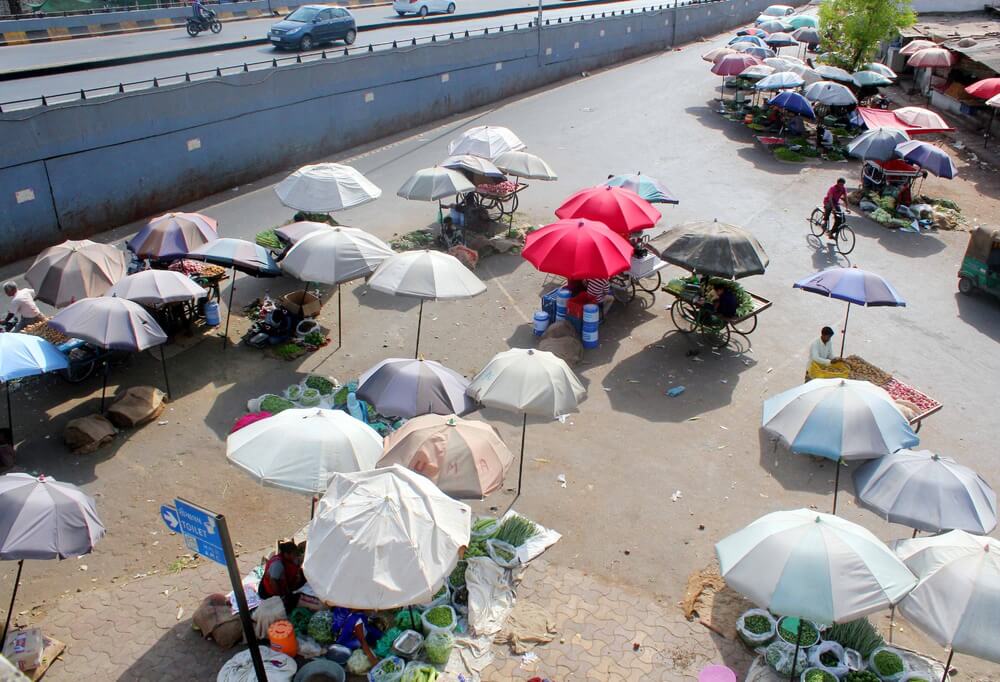
Photo: Team QoC
One success but is it that?
As heat waves become more intense and more frequent, the HAP appears to have made a difference between comfort and heat-stress, between life and death. In a heat wave or high heat situation, the topmost priority of any administration is to prevent heat-related deaths. In the last few years, Ahmedabad has reported fewer than 100 deaths every summer even during the worst daytime highest temperatures. This has been often attributed to the implementation of the HAP. In fact, it is cited as one of its successes that the HAP brought down or minimised heat-related fatalities every year.
However, it is not that simple. Firstly, heat-related illness and deaths are not ‘notifiable diseases’ which means that private doctors and hospitals do not have to compulsorily report them to the municipal corporation. Secondly, even if the reported numbers are negligible, this could also be due to the fact that such deaths are not separately recorded but are calculated as an excess of all-cause mortality in regular years. This may be rectified soon. Dr Tejas Shah, deputy health officer of Ahmedabad Municipal Corporation, said that “the central government has now instructed that there should now be separate recording of such deaths. Probably, from this year, we will be able to provide this data.”
The claim of nearly 1,100 lives saved every year from heat-related mortality, Dr Shah explained, was the figure arrived at. “This was comparative data with the average total number of deaths during the heat wave in 2010 against the normal average mortality. This is how the number was arrived at. What is a fact is that after the HAP came into force, patients with heat strokes or similar symptoms are immediately treated,” he said.
Experts like Dr Pathak concur that the plan may have brought down heat-related fatalities but caution that this, by itself, is not enough. Dr Dilip Mavalankar, director of Indian Institute of Public Health (IIPH), told Question of Cities that, according to a study done on the HAP it had helped reduce an estimated 1,100 heat-related deaths every year but noted that the plan was “more a curative response rather than a holistic Climate Change approach”.
However, other studies have raised questions about this ‘success’ of the HAP. Though heat-related deaths have been low or minimal every year despite high temperatures, there is little data to assert that this is directly attributable to the HAP given that other factors would have been at play too. “(There are) major knowledge gaps when it comes to the assessment of the HAP and its impacts,” pointed out this study[1] which is among the few critical reviews of the HAP.
In the study published in 2020, Swedish university researcher Dr. Maryam Nastar observed that “inadequate and arbitrary data and statistics regarding disadvantaged and vulnerable groups and their access to information, water, and green spaces during the heatwave periods may severely hinder the HAP’s potentials and lead to the systematical exclusion of the target groups.” The observation went beyond the often-repeated assertion about the low incidence of heat-related deaths to question whether the plan reaches the most vulnerable and disadvantaged groups in Ahmedabad who, logically speaking, would be suffering the worst impact of heat waves.
In the same vein, the question is if the HAP implementation is such that information and early warnings sent out about an impending heat wave reach the most vulnerable and disadvantaged groups, including slum dwellers, in the city. Or if these people remain excluded from the official information and warning systems, and rely on their own networks to take precautionary steps during a heat wave.
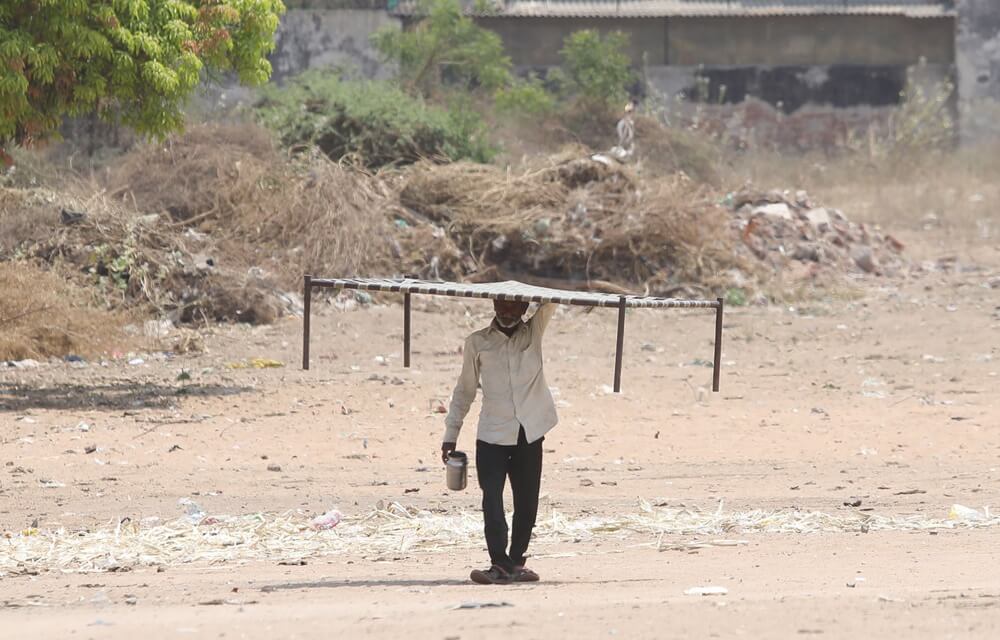
Photo: Team QoC
Four pillars of the plan
The Ahmedabad HAP, since its formulation, was based on four pillars or key strategy areas: Building public awareness and community outreach, initiating an early warning system and inter-agency coordination, capacity building of healthcare professionals, and promoting adaptive measures.
Conceived by the Ahmedabad Municipal Corporation with the Gandhinagar-based Indian Institute of Public Health (IIPH), the plan is largely a reactive or response plan to high temperatures and heat waves, and strives to provide some relief during such days every year. The focus was on vulnerable groups and people such as slum dwellers, outdoor workers, police personnel, daily wagers and so on.
The HAP suggests department-wise activities during heat wave days for issuing yellow, orange and red alerts, recommends the appointment of a municipal nodal officer to ensure coordination of stakeholders, promotes the use of reflective paint for keeping the roofs cool especially in low-income areas, prepares health workers and hospitals to provide medical aid in dedicated wards if possible, increases the availability of drinking water along with promoting the use of Oral Rehydration Solution and coconut water at regular distance across the city, and spreads awareness and alerts often through places of religious worship.
In the “Heat Action Plans Review”[2] published in 2021, the Integrated Research and Action for Development (IRADe) highlighted, as much for the Ahmedabad HAP as other cities’ that there was “the need for the development of a database to identify vulnerable areas. The HAPs can include specially designed measures to implement heat adaptive measures.” To make the plan more responsive, it suggested that the HAP should “include climate sensitivity (Climate Change projections), contextualising localised socio-economic patterns, and demarcating thermal hotspots, thermal Index and Temperature Thresholds at ward-levels.”
On these fronts, the Ahmedabad HAP could best be called a work in progress rather than a model template for others to follow.
Beyond heat-related mortality and morbidity
It is to be accepted that the strength and effectiveness of a HAP depends on its ability for coordination between multiple agencies or arms of the government, and, in the long-term, its integration with urban development policies.
The tendency in the Ahmedabad HAP has been the typically Indian bureaucratic approach of functioning in silos, far from an integrated and coordinated approach needed to tackle a complex and multi-sectoral issue like heat stress. Heat-related illnesses, deaths and impact on livelihoods cannot be separated from the economics and commerce department, health ministry, energy department, housing agencies, departments handling environment and Climate Change to list a few.
It also calls for regular and time-sensitive coordination between different layers or levels of administration as well as between the state government and Ahmedabad Municipal Corporation. It is no one’s case that the HAP has been able to develop this chain of command across hierarchies in the municipal corporation or between it and the government so that its implementation becomes seamless.
However, it is the HAP’s integration with the larger urban development paradigm or policies that needs urgent attention. “There is definitely a need to look at the holistic picture and the Heat Action Plan is only a part of it. It does not provide for mitigation, it is immediate relief to those who suffer and provides immediate help. If you look at it, nowhere in the country there is an environmental health officer; such an office is a key to the holistic approach that I am referring to,” said Dr Mavalankar.
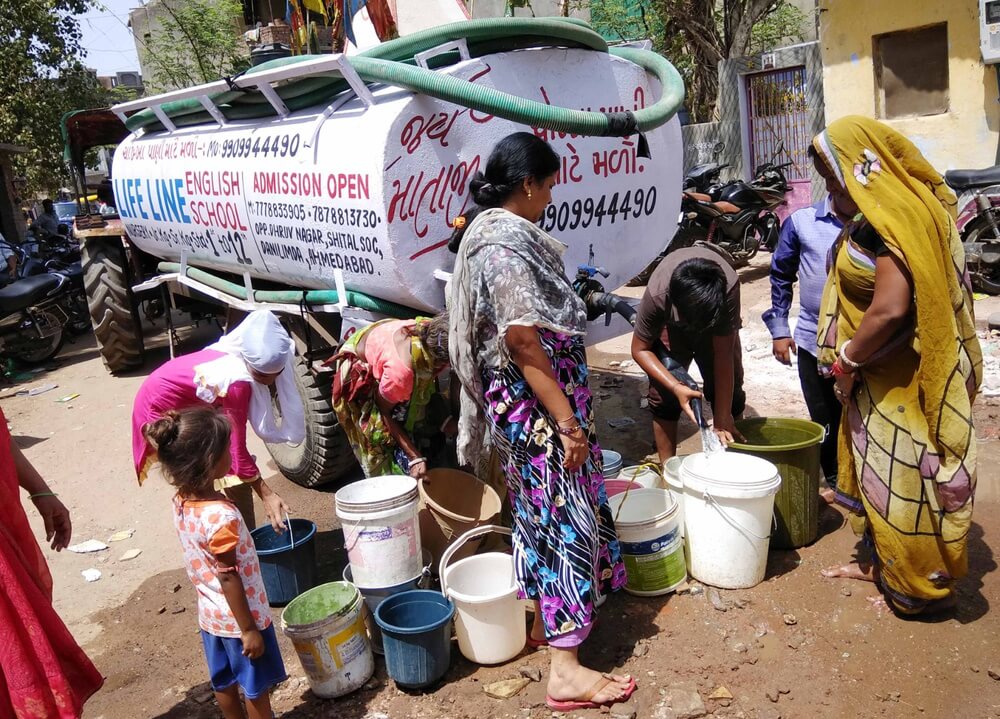
Photo: Team QoC
Dr. Darshini Mahadevia, an urban studies scholar at Ahmedabad University and former head of Centre for Urban Equity at the Ahmedabad-based Centre for Environmental Planning and Technology (CEPT), asserts that while the HAP is fine it is “not a mitigation plan” which should come from the urban planning level. The broader context or urban development within which such a plan should be placed and implemented is missing.
“Green and open spaces are shrinking, water bodies are either drying up or captured for construction, swanky buildings with severe heat-generating glass facades are being approved. A Heat Action Plan where you alert people of possible heat waves, to drink more water, stay indoors and other precautions is not an end in itself, it should be just a part of the overall effort,” explained Dr Mahadevia.
Such integration with urban development plans is necessary because in other parts of Gujarat, with 46 percent of the state’s population living in urban and peri-urban areas, there has been an increase in built-up spaces and decline in natural areas. A study by the Gujarat government’s Bhaskaracharya Institute of Space Applications and Geoinformatics (BISAG) and Central University of Gujarat (CUG) showed how the HAP’s efforts clash with the haphazard concrete construction and the rate at which the green spaces are reducing in Ahmedabad, and how the HAP has not been integrated with the overall urban development policy initiatives.
The study by a team from the two institutions, using Landsat images from 1974 to 2017, found that construction will occupy most of the municipal corporation areas across Ahmedabad by 2027 – only four years from now. It pointed out that the rapid urban growth is an overall potential threat to Ahmedabad’s sustainable and equitable development.
As against the “dangerously shrinking” agricultural land, open spaces and water bodies, densely built forms grew by 157 square kilometres during 1974-2017. Using geographic information system (GIS) calculations, the researchers projected that, by 2027, the agricultural land will reduce by 30 square kilometres while, as a silver lining, parks and gardens may increase marginally by 2.5 square kilometres for slightly improved urban vegetation.
The researchers expressed serious concern that “the predicted urban land use growth reveals that built-up spaces will cover the maximum part of the AMC area by 2027, if the present land use trend, demographic growth and commercial development do not show any major change.” Besides this, the study pointed out that water bodies in Ahmedabad are shrinking rapidly too due to increasing pollution and dumping of waste.
Together, this means as built form replaces the natural areas, the city is likely to face higher temperatures and greater incidence of heat waves. As the Swedish university study[3] pointed out: “The effectiveness and inclusiveness of the HAP depend, to a great extent, on its integration into urban development projects, which is a challenging task given the existing horizontal and vertical fragmentation in the planning of city projects. This calls for radical reforms not only at the organisational level, but also at the broader political and economic levels, at which national urban renewal missions and plans are drafted. Without these, it is unlikely that the HAP will be as effective and inclusive as it is intended to be.”
Darshan Desai, veteran journalist based in Ahmedabad, has reported and written on major developments in Gujarat and later in Uttar Pradesh for more than three decades. He is the Founder Editor of Development News Network.
Cover photo: A little boy drinks water from a free water distribution centre at Vasna area of Ahmedabad city on a hot summer day in March 2023 by Team QoC.

